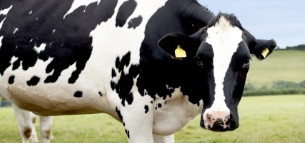Dairy Standards
ANIMAL HEALTH AND WELFARE Version 5.0 (modified)
Click to view
Key – Those standards which have greater significance (all other standards are normal)
Recommendation – Those which do not affect certification
New – A completely new standard which the member must now adhere to
Revised – A standard that has changed and requires the member to take some different or additional action to before
Upgraded – The standard has been upgraded to a Key standard or from a Recommendation to a full standard
Appendix – Referenced in ‘How you will be measured’. Indicates that additional information is provided in the Appendices, which are available at the end of each section.
DR.AH.1 Key
A written Health Plan must be established and implemented (REVISED)
How you will be measured
DR.AH.1.a
DR.AH.1.b
DR.AH.1.c
DR.AH.1.d
DR.AH.1.e
DR.AH.1.f
Health Plan
DR.AH.1.1
A written annual livestock health and performance review must be undertaken by the nominated vet or a vet from the nominated vet practice
How you will be measured
DR.AH.1.1.a
DR.AH.1.1.b
DR.AH.1.1.c
Health and performance review
DR.AH.1.2
BVD eradication must be managed as detailed in the herd health plan
How you will be measured
DR.AH.1.2.a
- Health Plan
- Test results
DR.AH.1.3
Johne’s disease must be managed through the implementation of the National Johne’s Plan.
How you will be measured
DR.AH.1.3.a
DR.AH.1.3.b
DR.AH.2
Records of the health and performance of livestock must be maintained
How you will be measured
DR.AH.2.a
- Farm records
– Recording tools
– Mortality Records
DR.AH.2.1
Annual collation of calf births/deaths must be maintained
How you will be measured
DR.AH.2.1.a
DR.AH.2.1.b
DR.AH.3
The nominated vet/vet practice must visit the farm at least annually and see the livestock to check for signs of disease
DR.AH.5
The health and welfare of livestock must be checked regularly for signs of illness, injury and stress
How you will be measured
DR.AH.5.a
DR.AH.6 Key
Livestock are handled in a manner without frightening and excessive force and not in a way to cause pain and suffering
Refer to Red Tractor Appendix for definition of unacceptable behaviour with regards to livestock handling.
How you will be measured
DR.AH.6.b
DR.AH.6.c
DR.AH.7 Key
All persons looking after the health and welfare of livestock must be demonstrably competent
How you will be measured
DR.AH.7.a
DR.AH.7.b
DR.AH.8 Key
Sick or injured livestock must receive prompt attention in order that suffering is not prolonged
How you will be measured
DR.AH.8.a
DR.AH.8.c
DR.AH.8.d
DR.AH.8.e
DR.AH.8.f
Euthanasia policy
DR.AH.8.1
Appropriate facilities must be provided for the segregation of sick and injured livestock, that are managed and maintained in accordance with scheme standards for housing and facilities, feed and water
- Further information on animal health and welfare is given in the Code of Recommendations for the Welfare of Livestock – Cattle and Sheep and at: www.gov.uk/animal-welfare
- Guidance on animal health and disease can be found at: www.nadis.org.uk, beefandlamb.ahdb.org.uk/returns/, www.gov.uk/guidance/keeping-livestock-healthy-disease-controls-and-prevention
- Guidance on euthanasia can be found at: www.hsa.org.uk
- Guidance on shearing can be found at: https://www.nationalsheep.org.uk/workspace/pdfs/industry-shearing-guidance-2019.pdf
- Guidance on dipping can be found at: https://www.hse.gov.uk/pubns/ais41.pdf
More Standards
- AH.1.2 – Management of the breeding herd may include:
– vaccination
– tag and test all calves
– blood sampling to determine status of herd
– milk sampling to determine presence of disease
– removal of PI animals from the herd
